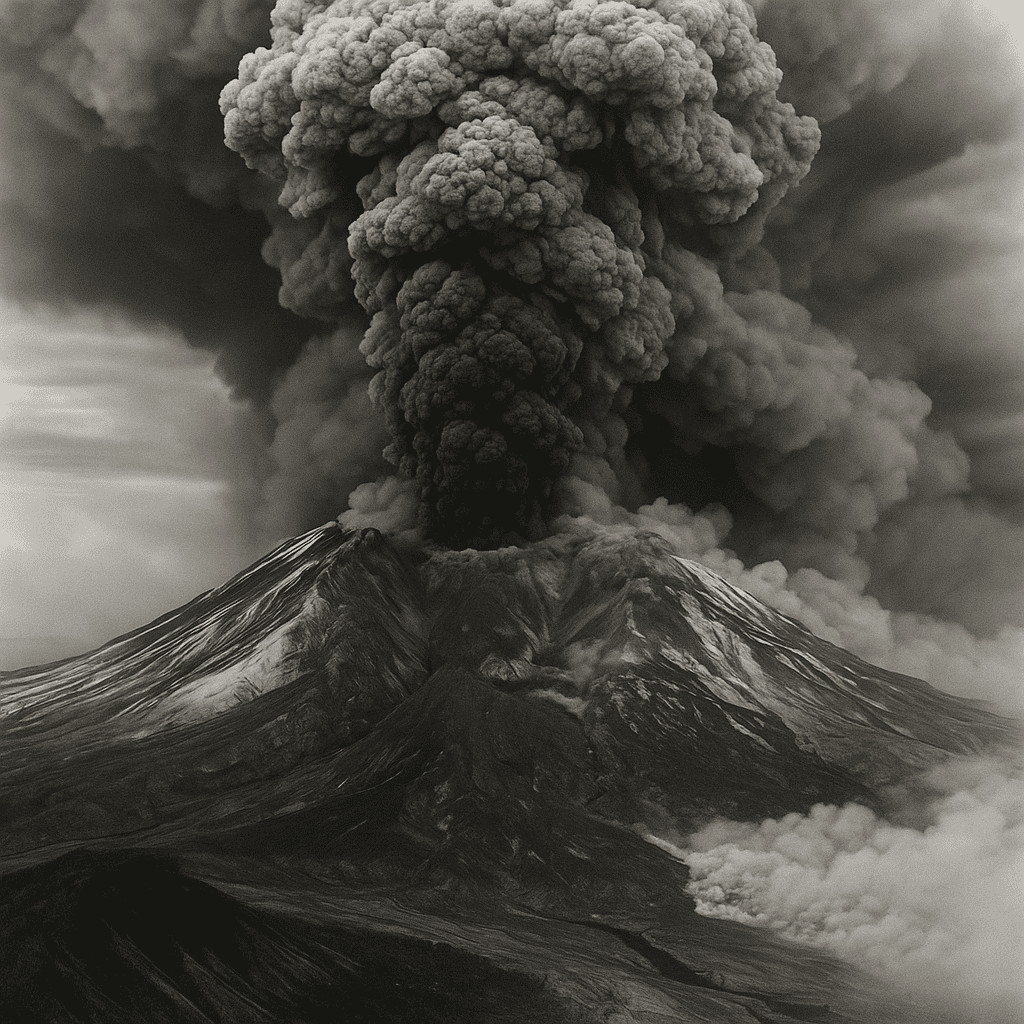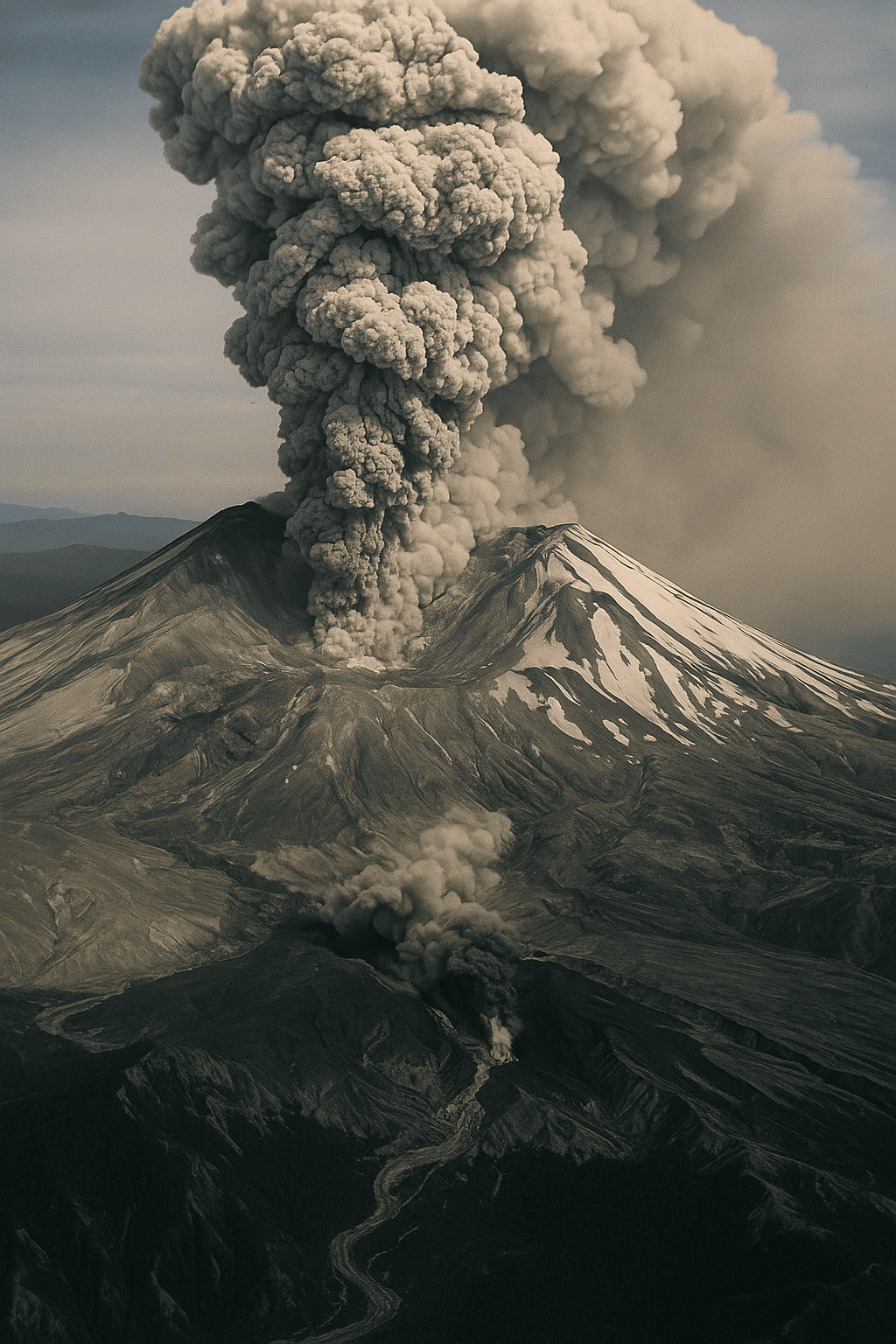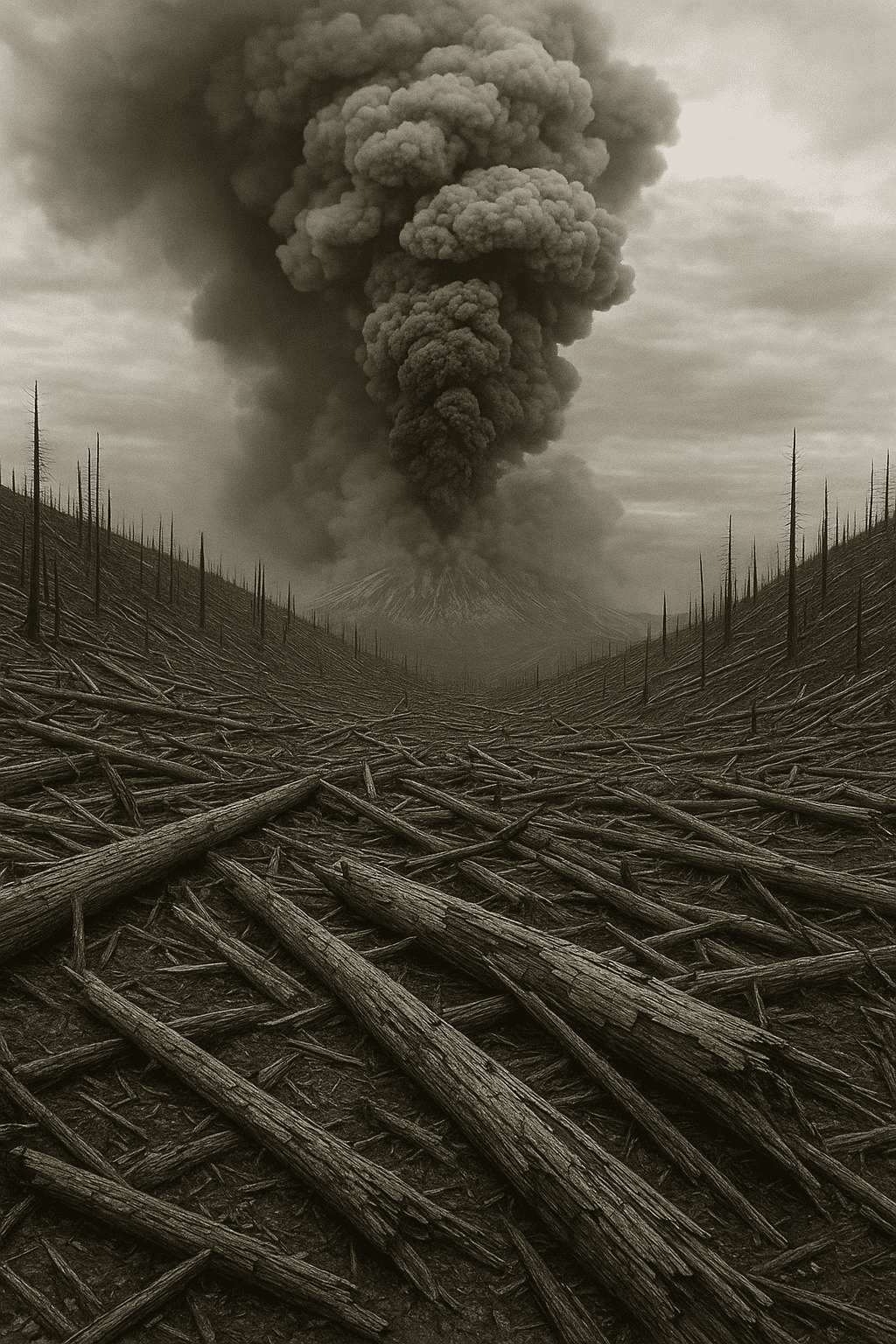On May 18, 1980, Mount St. Helens in Washington State unleashed one of the most powerful and devastating volcanic eruptions in U.S. history. At 8:32 a.m., a 5.1 magnitude earthquake triggered the collapse of the volcano’s north face—the largest landslide ever recorded—followed by a massive lateral blast that flattened everything in its path. The eruption killed 57 people, obliterated hundreds of square miles of forest, and caused more than $1 billion in damage.

Prior to the eruption, Mount St. Helens had long been considered one of the most picturesque peaks in the Cascade Range. But weeks of increasing seismic activity and visible swelling in the mountain’s northern flank signaled mounting pressure beneath the surface. When the earthquake struck, the sudden release of trapped magma created a cataclysmic explosion that tore away the summit and reduced the mountain’s height by more than 1,300 feet.
The lateral blast, reaching speeds of up to 670 mph, flattened everything within a 230-square-mile area. Ash clouds rose 15 miles into the sky, spreading volcanic debris across multiple states and darkening skies as far away as the Midwest.

The eruption was not only a geological event but a human tragedy. Fifty-seven people lost their lives, including scientists, photographers, loggers, and residents who had remained near the mountain. Communities downwind of the ash plume struggled with respiratory issues, disrupted transportation, and severe economic losses.
The environmental impact was equally staggering. Entire ecosystems were buried or incinerated. Rivers were clogged with sediment, and wildlife was decimated. Yet, over time, Mount St. Helens also became a living laboratory for ecological recovery. The region’s slow but steady regeneration has provided scientists with invaluable insight into how life returns after catastrophic disturbance.

The eruption of Mount St. Helens marked a turning point in the study of volcanology. It advanced the understanding of explosive eruptions, debris avalanches, and ecosystem resilience. The U.S. Geological Survey and other agencies used the event to refine monitoring techniques and early warning systems, which have since improved disaster preparedness for volcanoes worldwide.
Today, the Mount St. Helens National Volcanic Monument stands as a testament to the forces of nature and the power of renewal. May 18, 1980, is remembered not just for the destruction it wrought, but for the lessons it taught about scientific vigilance, environmental recovery, and the delicate balance between humanity and the natural world.